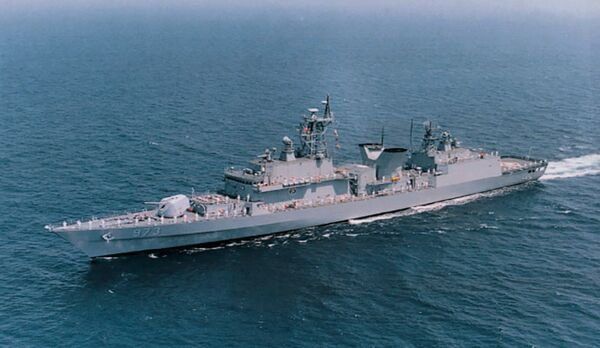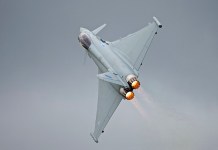The combat capability of the South Korean Navy is likely to increase significantly as three of its KDX-1 class destroyers have gone through major upgrades.
After an elaborate program that focused on combat-specific enhancements, the last of the upgraded destroyer was secured by the South Korean Navy. The new addition is seen as a much-needed breather for the Navy.
The South Korean Navy acquired the last of three modified Gwanggaeto Daewang (KDX-1)-class destroyers, Eulji Mundeok, marking the end of a performance enhancement project, according to the Defense Acquisition Program Administration (DAPA), reported Naval Today.

The vessel was given to the Navy on December 28 after receiving increased combat capabilities, as previously reported. In 2018, Daewoo Shipbuilding and Marine Engineering (DSME), a South Korean shipbuilder, was awarded a contract to renovate and repair three KDX-I class destroyers.
According to DAPA, the 3,200-ton destroyers had their combat systems and sensors modernized after serving as command ships since 2016. The destroyers now have a domestic combat system.
“By delivering the Eulji Mundeok to the Navy as the final ship of the KDX-I performance improvement project, we have successfully completed the first performance enhancement project of the Navy’s surface ships,” DAPA official Geuk-cheol Bang said.
The first KDX-I destroyer, Yang Manchun, was refitted in September, and the second vessel, Gwanggaeto the Great, was re-commissioned in October. With Eulji Mundeok returning, the program has officially come to an end.
The destroyer now has a domestic combat system with enhanced battle command abilities as a result of the upgrade. It has also been equipped with the Towed Array Sonar System, which improves the detection and tracking of undersea targets, according to Naval Technology.
Republic of #Korea warships taking part in the 3-carrier strike force demonstration in the Sea of Japan include #destroyers #SEJONG THE GREAT (991) and EULJI MUNDEOK (972) pic.twitter.com/zDIbJEUsWE
— Chris Cavas (@CavasShips) November 13, 2017
Meanwhile, as the KDX-1 destroyers have been returned to its Navy after upgrades, Hyundai Heavy Industries (HHI), a South Korean shipbuilder, has already started work on the Navy’s first modernized Sejong the Great-class (KDX-III) Batch-II guided-missile destroyer.
KDX-I Destroyers
The Republic of Korea Navy’s Gwanggaeto the Great-class destroyers, also known as KDX-I, are categorized as frigates by some. It was the first phase of the KDX program, which aimed to transform the navy from a coastal defense force to a blue-water one.
The KDX-I was meant to replace the obsolete destroyers delivered by the US Navy to Korea in the 1950s and 1960s. Following the ship’s launch, there was a significant increase in South Korean international engagement in anti-piracy and military operations.

The Super Lynx helicopter, which works in tandem with shipboard sensors to seek out and destroy submarines at great distances from the ships, is the principal weapon used by Gwanggaeto.
The Mark 46 torpedoes, launched from triple torpedo tubes in launcher compartments on either side of the forward end of the helicopter hangar, are a close-in anti-submarine weapon carried by these destroyers.
The RGM-84 Harpoon surface-to-surface missile, located in two quadruple launch tubes on the main deck level between the funnel and the helicopter hangar, provides a secondary anti-ship system.
South Korea’s Blue Water Fleet
The South Korean Navy is expanding to construct a fully-fledged blue water fleet, rather than focusing primarily on the danger from its northern neighbor, according to USNI News.
The service is building up its surface fleet and increasing the capability of its submarines with the help of two main naval shipbuilders, Hyundai Heavy Industries (HHI) in Ulsan and Daewoo Shipbuilding and Mechanical Engineering (DSME) in Okpo. The goal is to provide more firepower and conduct wider regional engagements.

According to independent defense researcher Professor Kim Jae Yeop, “Republic of Korea Navy’s long-held aim to become an ocean-going navy, is based on the idea that the country’s security challenge will not be restricted to existing threats from the North in the longer future.” He claims that this viewpoint is bolstered by South Korea’s geopolitical location, which is surrounded by significant nations such as China and Japan.
Apart from the upgraded KDX-I, the present fleet of KDX-II and the KDX-III that is in the works, the Navy intends to build a fourth class of destroyers.
From the mid-2020s, the Korean Navy aims to acquire another six destroyers designated as the KDDX or KDX-IV. These destroyers, which are expected to weigh between 6,000 and 8,000 tonnes, will fill a gap between the 10,000-ton KDX-III and the older 4,200-ton KDX-II workhorse.
These additional ships will be smaller versions of the KDX-III and will provide a critical mass to the fleet during times of maritime conflict while also improving air defense capabilities with multifunction radar.
A Blue Water Navy is a maritime force that has the capability of operating globally, especially across the deep waters of open oceans. South Korea’s new Mid-Term Defense Plan (MTDP) 2021-2025, which was released in late 2020, reaffirmed this shift toward greater expeditionary operations.
- Contact the author at sakshi.tiwari9555@gmail.com
- Follow EurAsian Times on Google News




